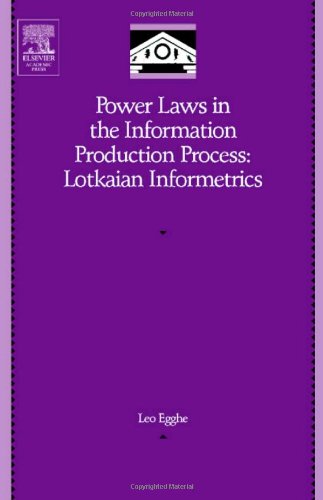

Most ebook files are in PDF format, so you can easily read them using various software such as Foxit Reader or directly on the Google Chrome browser.
Some ebook files are released by publishers in other formats such as .awz, .mobi, .epub, .fb2, etc. You may need to install specific software to read these formats on mobile/PC, such as Calibre.
Please read the tutorial at this link: https://ebookbell.com/faq
We offer FREE conversion to the popular formats you request; however, this may take some time. Therefore, right after payment, please email us, and we will try to provide the service as quickly as possible.
For some exceptional file formats or broken links (if any), please refrain from opening any disputes. Instead, email us first, and we will try to assist within a maximum of 6 hours.
EbookBell Team

4.0
56 reviewsApplications are given in the following fields: three-dimensional informetrics (positive reinforcement and Type/Token-Taken informetrics), concentration theory (including the description of Lorenz curves and concentration measures in Lotkaian informetrics), fractal complexity theory (Lotkaian informetrics as self-similar fractals), Lotkaian informetrics in which items can have multiple sources (where fractional size-frequency functions are constructed), the theory of first-citation distributions and the N-fold Cartesian product of IPPs (describing frequency functions for N-grams and N-word phrases).In the Appendix, methods are given to determine the parameters in the law of Lotka, based on a set of discrete data.
The book explains numerous informetric regularities, only based on a decreasing power law as size-frequency function, i.e. Lotka's law. It revives the historical formulation of Alfred Lotka of 1926 and shows the power of this power law, both in classical aspects of informetrics (libraries, bibliographies) as well as in 'new' applications such as social networks (citation or collaboration networks and the Internet).